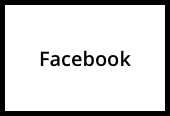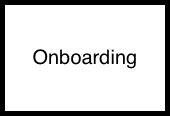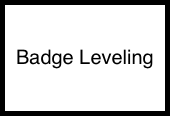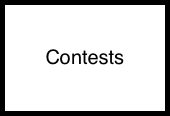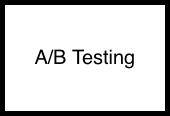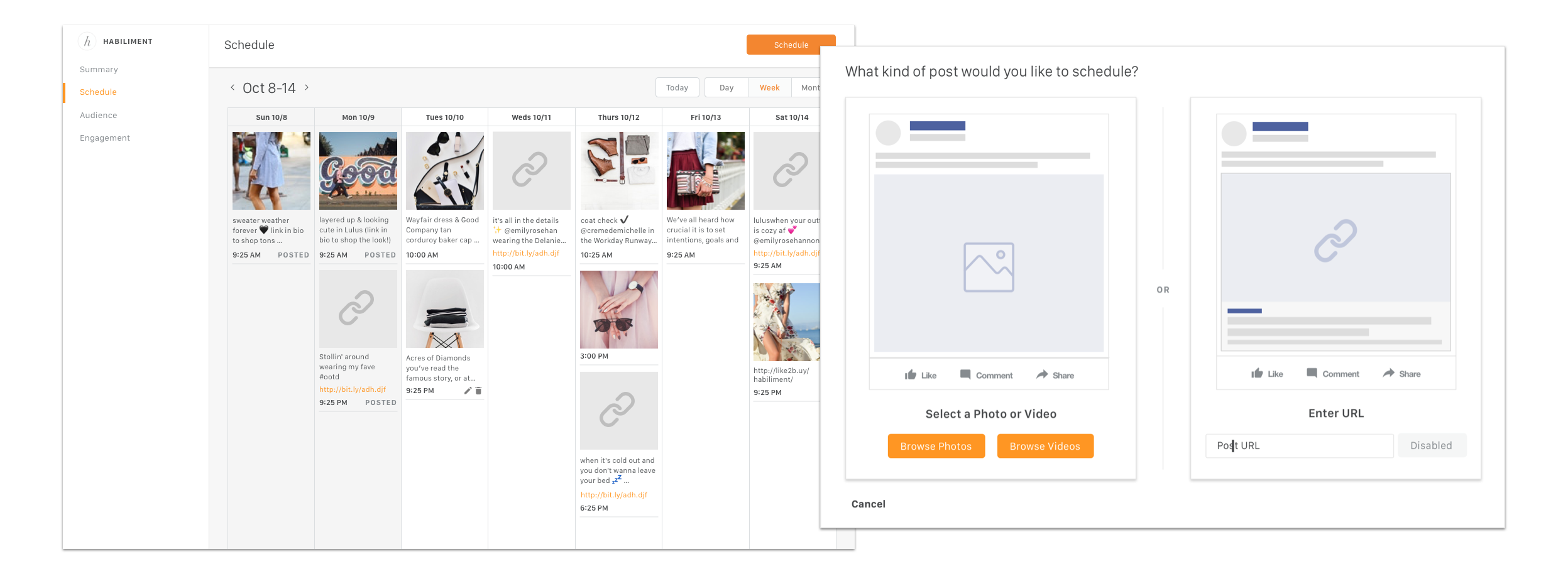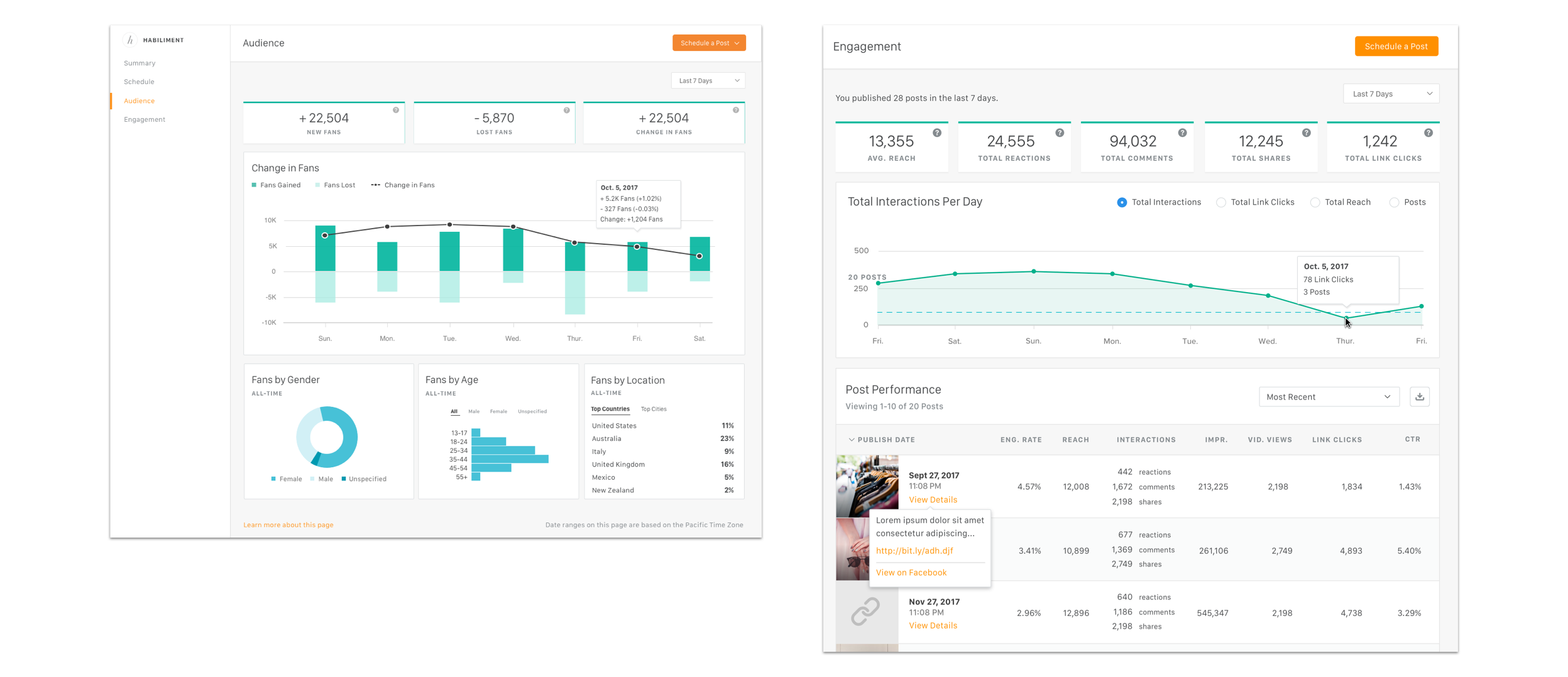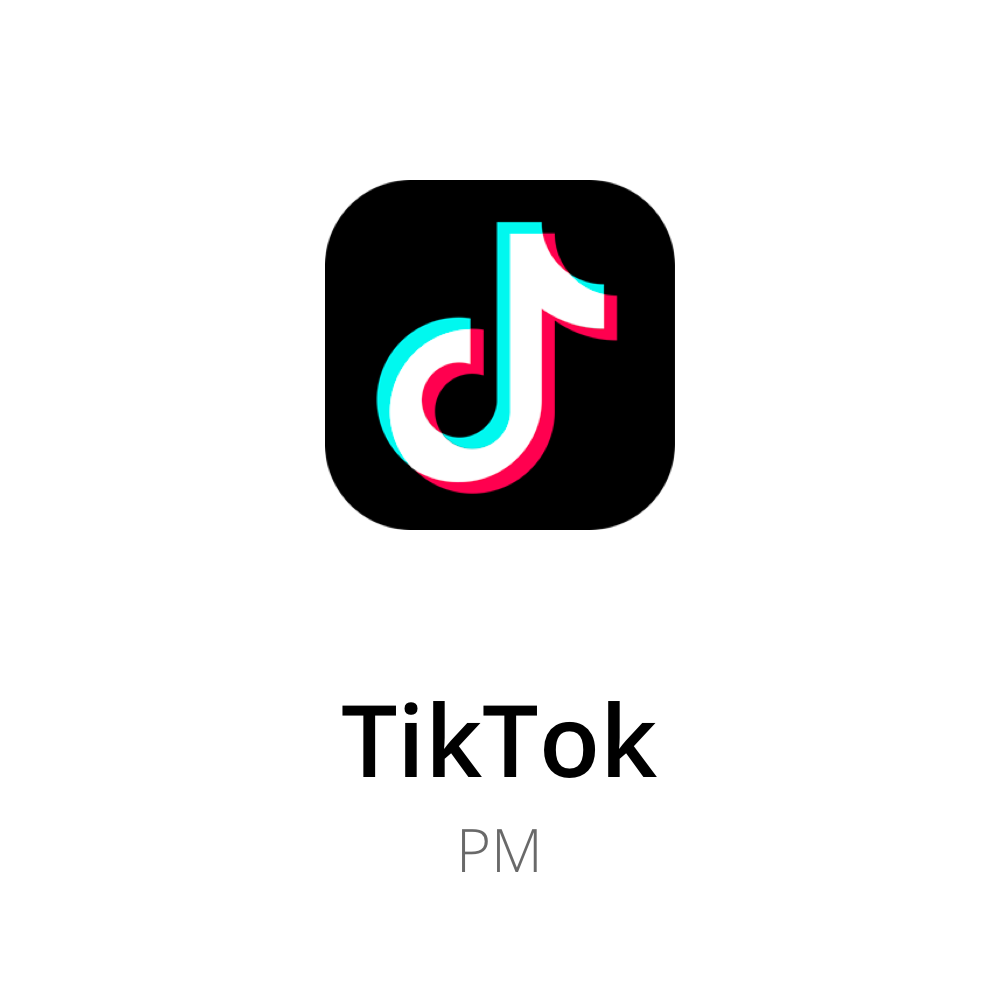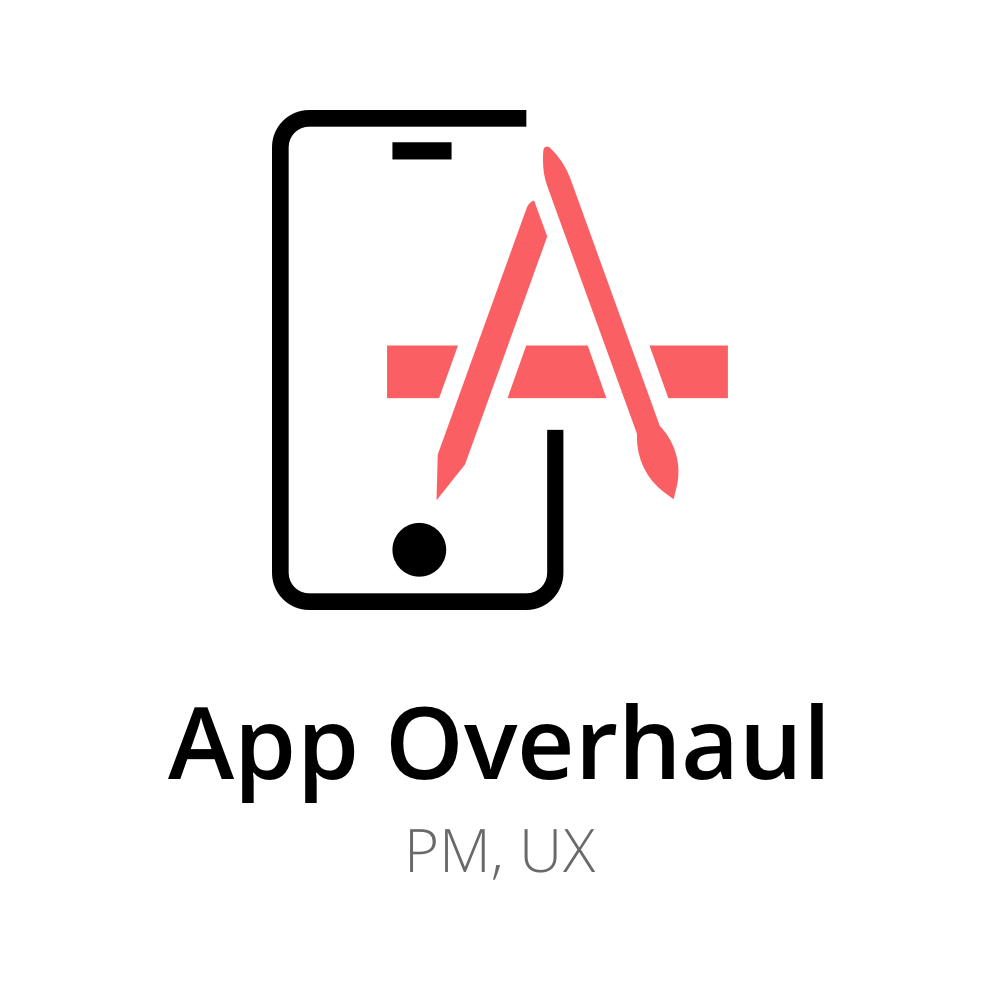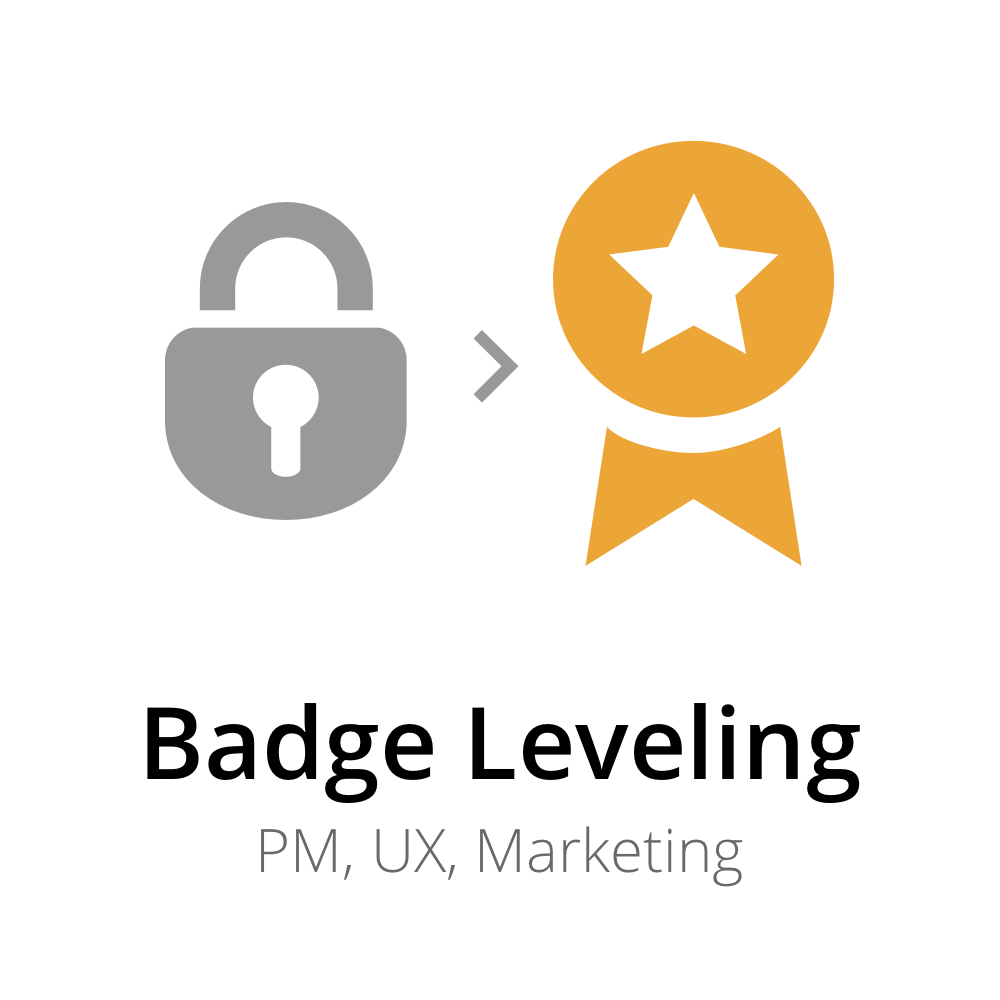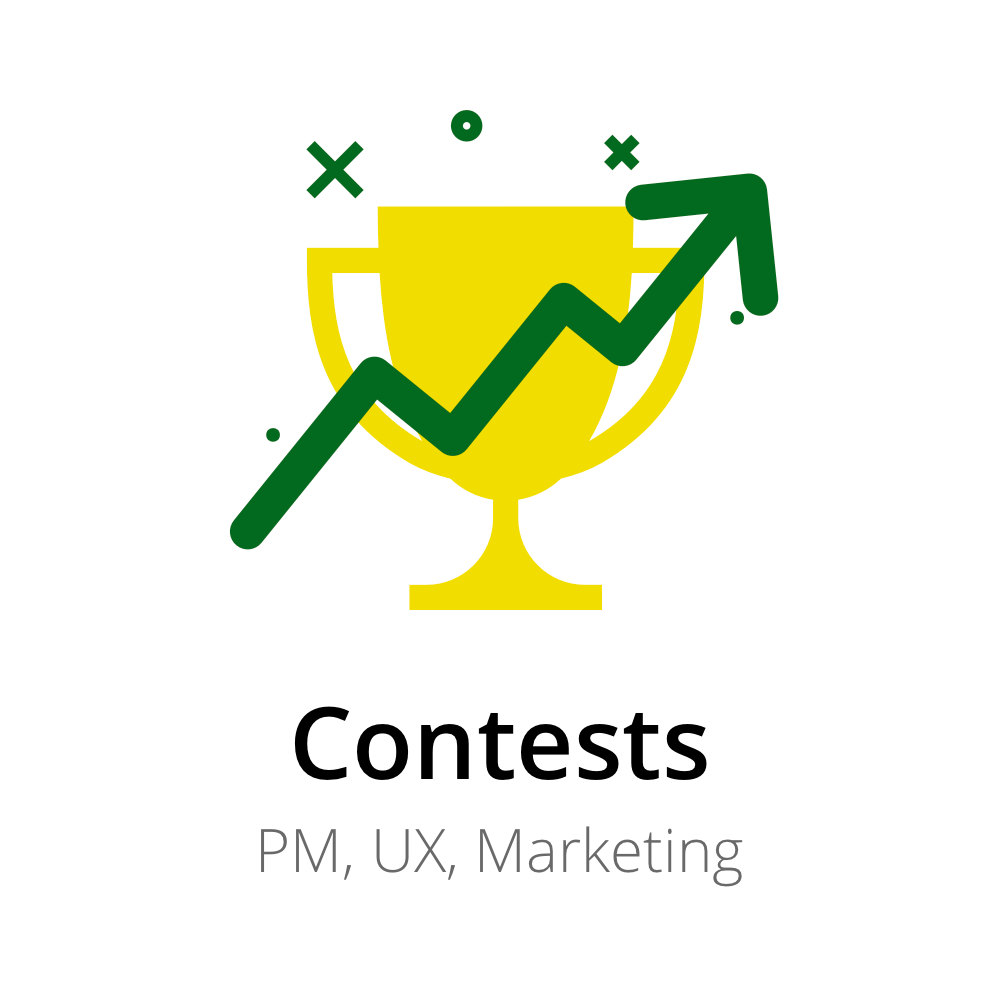Facebook Dashboard
Role Involved
Research, PM, GTM
Problem
There were two perspectives to consider when scoping out Facebook. On one hand it was important to expand our social offerings to include Facebook as despite many brands focusing primarily on Instagram, Facebook continues to be one of the leading drivers of social reach. To make good on Curalate’s promise to make social sell, we needed to expand to offer Facebook scheduling and analytics to empower our sales pitch. In addition, clients had regularly reported pain juggling multiple tools to execute on their social strategy. Consolidation was a key value proposition to allow clients to exclusively use Curalate for their day-to-day social workflows. Adding support for Facebook scheduling and analytics would empower our clients to cancel their contracts with other tools and help unlock additional budget towards Curalate.
Strategy
When initially scoping Facebook support, there were a ton of open questions on what features were necessary for MVP. To help get a sense of client behavior, I pulled the most recent 25 posts published by every Facebook connected client to their primary business page. Because we historically had supported Instagram scheduling and analytics as part of our product offerings, this was a fairly large data set that gave an authentic look into what types of posts our clients were scheduling as well as what other tools they were using to schedule. With this data set I was able to identify a couple features off the bat that Facebook’s API would allow us to build, but clients were using too rarely to warrant including for MVP, such as geo-tagging, boosting posts, brand partnership tags, and scheduling carousel posts.
In addition to using the data to identify low priority features, the data set also revealed the range of competitors that clients were using to schedule Facebook content. With this, I did a competitive audit on the top four platforms clients had used for Facebook scheduling to take inventory on the most common core marketed features. Although full parity was unnecessary for MVP, I wanted acceptable parity when it came to core Facebook scheduling and analytics features to ensure the sales pitch to move client budget from other tools over to Curalate went smoothly.
To supplement these analyses, I sent out a survey to 60 clients to validate that my initial feature cuts would not be missed based on the initial quantitative data pull, as well as to get a stack rank on what product offerings were most important to clients’ day-to-day that they might be familiar with from a competitor. This ultimately closed out a lot of our open questions that my initial cuts were reasonable, and helped me make a case for some of the more debated feature cuts that stakeholders were pushing such as paid boosting support.
Once we had our final list of features scoped out, we went into design which consisted of a few rounds of usability tests with non-users who were responsible for Facebook scheduling as part of their day-to-day jobs, as well as internal folks who worked heavily with the customer experience. This was key in identifying areas of improvement and necessary copy updates. One particular design pattern we were looking to validate was using visual examples of post types that clients could schedule, rather than an old pattern of using a text drop-down.
When it came time to release the Facebook dashboard product, we started with an opt-in beta which involved a lot of cross-department work to introduce and train clients on Facebook offerings. For this, I prepped our account managers on demo materials and a demo talk track. I also trained them on value propositions to emphasize, interesting scheduling use cases, best practices for reporting, as well as competitive information to have on hand for calls.
Working with the account team was crucial in collecting feedback from over 40 clients via interviews, over email, and through in-app survey which provided strong signal for which follow-ups to prioritize after beta.
Results
After a 90-client beta, I released the Facebook product to all clients which increased our weekly active users by over 300%. Introducing the new link with a colorful “New” label got a lot of attention, along with introducing a self-service onboarding experience so no additional internal resources were needed to scale.
As it stands, Facebook has become a core Curalate product that has expanded our competitive standpoint against similar tools. It has a steadily increasing base of over 600 clients visiting over 2.5k times a week to both schedule content and access our Facebook reporting.
